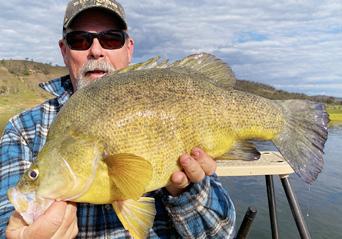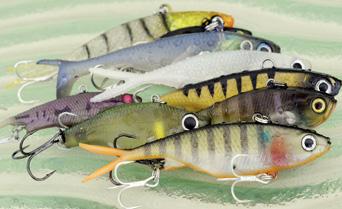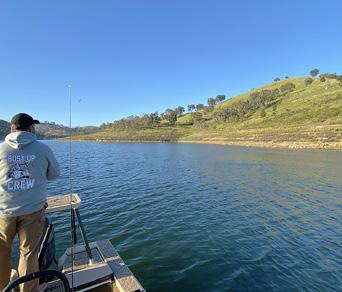
4 minute read
Starlo’s back to basics
Searching for spring gold
NSW STH COAST Steve Starling
www.fishotopia.com
From Victoria to Queensland, spring marks the peak time to target XOS yellowbelly or golden perch in our dams.
Golden perch or yellowbelly are our second largest inland native after when water temperatures rise through the 16 degree Celsius mark and continue climbing towards 18 or 20 degrees. This can occur as early as August in some low altitude Queensland impoundments, and as late as December in Victorian waterways, especially those at higher elevations.
Yellowbelly are generally more catch-able
Yellas of this size are just ‘average’ in many of our dams these days, and we are coming into the prime months for chasing them.
Murray cod, and one of the country’s most popular freshwater targets. They can be caught all year on baits, lures and even flies, but the next three months are recognized as the peak at this time, but they’re often far from a pushover. Angling pressure on goldens is ramping up every year. Likely bays and points in big dams like Eildon, Eppalock, Burrinjuck, Wyangala, Burrendong, Windamere, Somerset or Boondooma that may have rarely seen more than a couple of boats a week 20 years ago are now fished regularly… and hard. Perch and other fish that live in these waters get to see lots of baits, lures and flies and some of them are caught (and often released) in the process. The effect of all this pressure is an increasingly cagey and cautious fish population. As a result, they become harder to catch, meaning smart anglers have been forced to modify their

Starlo’s e-book about targeting big yellowbelly in our dams has become something of a ‘bible’ among those chasing these fish. Scan the QR code accompanying this column to find out how you can obtain a copy.

Early starts can be a tad chilly in September and October, but it’s worth getting out of bed for the morning bite.
period for chasing these fish, especially in the many dams where they’ve been stocked.
Almost without exception, the best fishing for golden perch in these dams will take place during September, October and November, and is closely associated with pre-spawn behavior, despite the fact that they rarely reproduce with any great success in man-made dams.
The peak bite period for yellowbelly in most of these dams tends to occur Jo with average yella taken during the morning bite period.


tackle and techniques in order to maintain catch rates. Mostly, this has involved using lighter gear and different lure styles to those more traditionally associated
Gun golden perch specialists like the Hardman family, Kevin Savvas, Murray Stewart and many others have refined their ‘shake-and-shuffle’ retrieves with blades and vibes to incorporate subtle nuances that can make all the difference on the day. Most of the more effective presentations combines a slow rotation of the reel’s handle with a shaking of the rod tip, interspersed with the occasional pause. These shaking strategies can be deadly on goldens.
Where to begin looking for yellowbelly in dams varies from one impoundment to the next, but at this time of year, most will be caught in a band between the bank and a depth of about 6 or 7 metres.

Soft vibes have a place in the tackle box of any angler targeting yellowbelly, although many now swap out the standard trebles for smallish assist hooks. Look for concentrations of fish in and around aquatic vegetation, but particularly along the inner and outer edges of weed beds and in any defined gaps or channels running through those beds. You should also learn to
QR CODE
Scan this QR code to find out how you can obtain Starlo’s e-book on catching yellowbelly in dams.
recognise ‘good’ weed, which is typically healthylooking and vibrantly coloured. Brown, dying or dead and ‘slimy’ weed is less attractive habitat for fish and the things they eat.
Beyond these absolute basics, one could literally write a book on catching golden perch in our dams, and I’ve done exactly that! If you’re interested in knowing a lot more, the QR code with this column will tell you how to obtain a copy.
with yellowbelly.
Metal and plastic (hard and soft) vibes have become ‘go-to’ choices for many anglers targeting goldens, especially from boats and kayaks. These sinking lures are often retro-fitted with small, super-sharp assist hooks that pin fish better and also foul up less often in the weed beds and aquatic vegetation favoured by goldens. They’re typically fished with a lift-drop-lift jigging action, although they can also be ripped more violently, presented with a constant, steady retrieve (horizontally or vertically), ‘shuffled’, ‘shaken’, ‘dragged’ and even trolled.




















